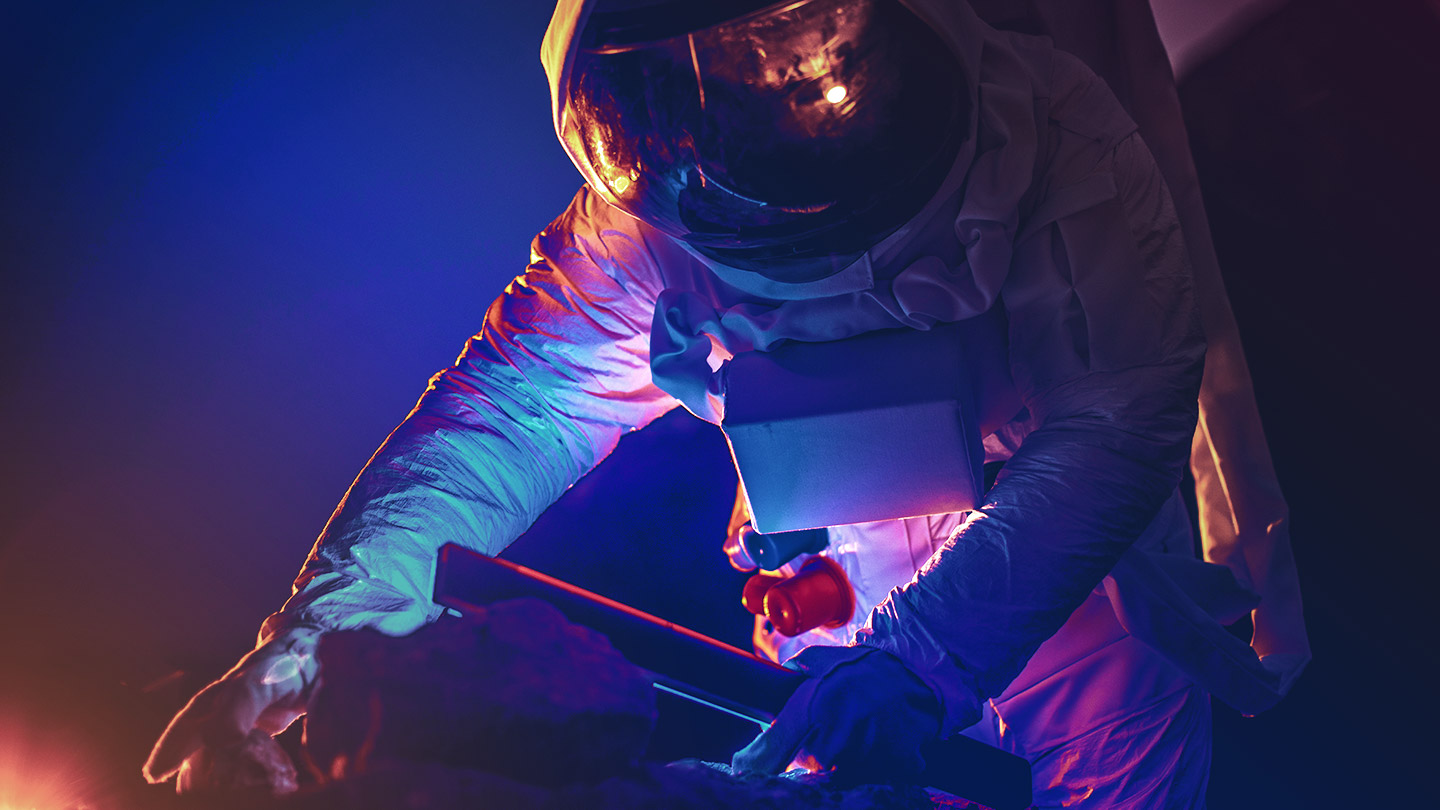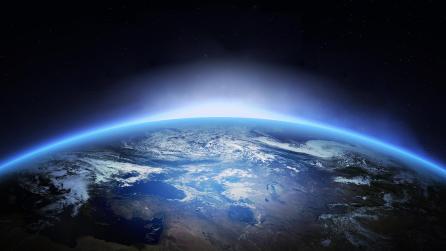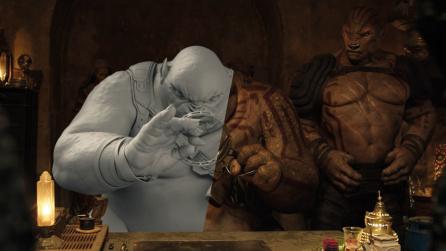How mixed reality is sending us across the solar system
Our exploration of space has provided some of the most iconic and definitive moments in human history.
The truth is, however, that expeditions to other planets and moons are vanishingly rare.
Landing human beings on the surfaces of these worlds is even less common (it’s been 47 years since anybody last kicked up the lunar dust of our moon, back in 1972).
So when space missions do occur, the stakes are high. You only get one shot, and there can be human lives on the line.
Space agencies are constantly looking for ways to practice, training ground control and astronauts in environments that are as close to the real thing as possible.
Immersive technologies provide the perfect means to do this.
The US government space agency has been developing and using VR technology since the 1980s.
As the technology has evolved and expanded into AR and MR, it’s opened up new ways for scientists to test out a whole series of different scenarios.
In this article, we’ll explore some of the most innovative and exciting ways it’s being used today in our bid to conquer the stars.

Exploring Titan with Microsoft Hololens
Titan is Saturn’s largest moon.
For many scientists, it tops the wish-list of places to visit, because it’s the only of our solar system’s known moons that has a substantial atmosphere, and it’s the only place besides Earth known to have liquids in the form of rivers, lakes and seas on its surface.
That means it’s one of our best candidates for finding life outside of Earth.
At the Johns Hopkins University Applied Physics Laboratory (APL) in Maryland, a team is currently working on a robotic probe mission to Titan.
The rotorcraft-lander they’re building is called Dragonfly.
To design and prepare for the mission, the team have created AR and VR simulations to allow them to manipulate a virtual version of the robotic drone in situations similar to those it will encounter on the surface.
A recent video shows that a lot of the work on this sandbox environment is being conducted using the Microsoft HoloLens 1.
As well as using the HoloLens for pre-mission training simulations, the team is planning to use the kit on the moon’s surface, to plan out various missions Dragonfly will complete once it lands.
That means by the time this expensive piece kit lands on Titan, the ground crew controlling key operations will have performed them hundreds, if not thousands of times before.
They’ll know the drill like the back of their hand, all because of the realistic training afforded by MR simulation.
VR for astronaut mental health
When it comes to space exploration, few missions are as emotive as a trip to Mars.
The red planet has captured the imagination of writers, artists and storytellers for millenia.
Recent times have seen serious thought and effort being invested into working out a way to get there - and specifically, how to get a human onto the surface.
While it’s easy to get carried away with the logistics and tech, a huge part of the puzzle for this mission is in maintaining the well-being of the astronauts.
Looking after your mental health is different in space.
The confined nature of the spacecraft, and the extended time periods involved, means astronauts face a unique set of stresses and pressures.
NASA strives to prepare future astronauts for these challenges by training them in physical environments on earth that recreate the confinement and isolation they’ll face.
The Human Exploration Research Analog (HERA) is the best known of these experiments.
Studying environments like Arctic research stations and submarines can also provide useful context to assess the psychological issues that might arise on a mission to Mars.
Virtual reality systems have been mooted as a potential solution for alleviating stress in space, with a research paper published in 2017 exploring the ways VR could positively impact the mental health of astronauts on long missions.
One of its key findings is that VR could have an enormously beneficial impact by providing access to virtual, natural environments.
Countless studies have concluded that viewing nature scenes effectively decreases stress - a phenomena that could be even more powerful up in space.
On top of this, the confidential, calming environment of a natural VR landscape could offer a sense of much-needed privacy in the intense, confined conditions of a spacecraft.
In 2006, a study found that pairing indoor exercise with a VR headset produced calming effects. Intriguingly, these were even more calming than exercising outdoors.
One way to administer VR experiences as a form of therapy therefore might be to combine them with exercise. Regular exercise is already a mandatory part of an astronaut’s daily regime to prevent muscle wastage in the zero gravity conditions.
With VR, the user could be jogging through the woods, their hometown, or a park, instead of just staring at a blank wall.
Similarly, VR could provide an outlet to stimulate astronauts’ minds.
A manned trip to Mars could take anywhere between 150-300 days. One of the obvious mental health challenges facing astronauts is boredom.
VR offers a great way to stave boredom off with immersive games and films, and could even be used in a collaborative environment with other astronauts to create a social experience.
And should they get homesick, VR also provides a much more visceral method of communicating with friends and family back on Earth.
They’ll feel less lonely (another huge mental health issue for humans living in isolation) if they can interact with loved ones regularly and with a sense of presence, rather than just sending text-based messages or using video calling.
By offering an immersive alternate reality to step into then, VR could be a lifeline when it comes to keeping astronauts sane.

Virtual Reality for studying perception in space
A third way immersive technology is better preparing us for the trials and tribulations of space is in our perception of distance.
Human perception is altered by spaceflight.
In microgravity, astronauts often feel like they’re moving if they see another object moving, even when they’re not.
This makes depth perception much more difficult, which could potentially be a big problem if you’re guiding something like a robotic arm to perform complex operations.
Canadian scientists have come up with an ingenious experiment to explore this phenomena, harnessing the immersive power of VR.
Vection is a virtual reality experience in which astronauts estimate the size and motion of objects in space.
It consists of a series of tests conducted in a VR environment: estimating the size of an object, moving in the virtual world to where you think the object was placed in a hallway, and determining how you perceive tilt and visual acceleration.
Testing is scheduled to continue until 2022, with the results likely to be used to enhance the safety of operations aboard the ISS, as well as help future astronaut crews working on the moon or Mars.
Space technology is some of the most advanced humans can create today.
At the same time, we’re living in a period of extraordinary evolution in visualization technology, with the convergence of AI and immersive technologies opening up a world of previously unimaginable possibilities.
In the coming decades, we can expect to see VR, AR and MR playing more and more of a role in exploratory space missions, preparing us for new worlds before we’ve set foot on them, and helping guide our missions when we get there.


